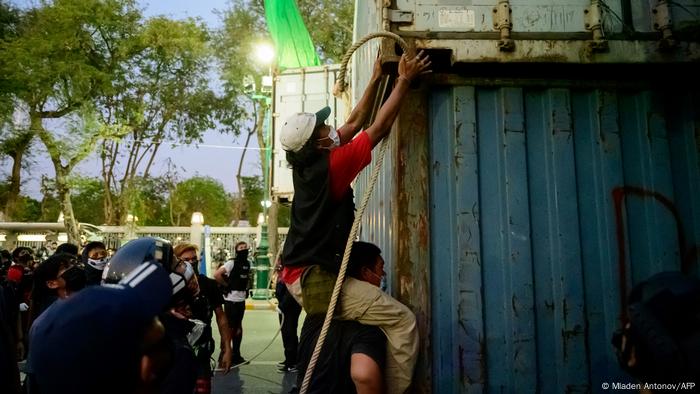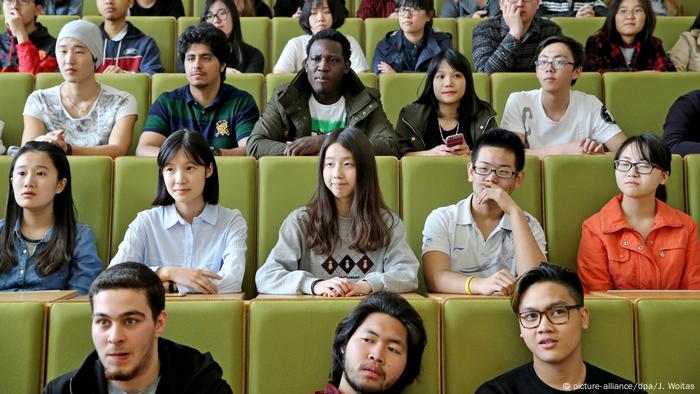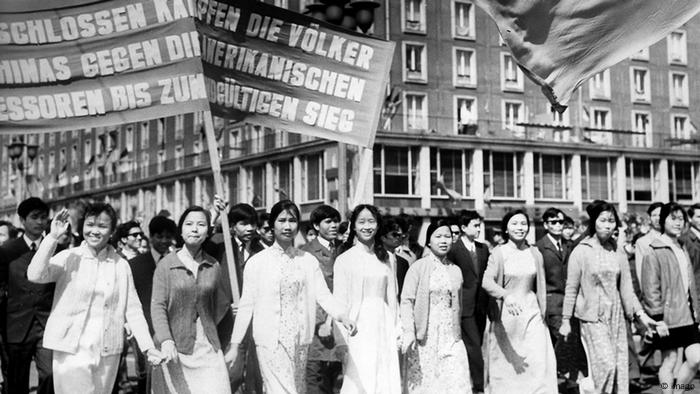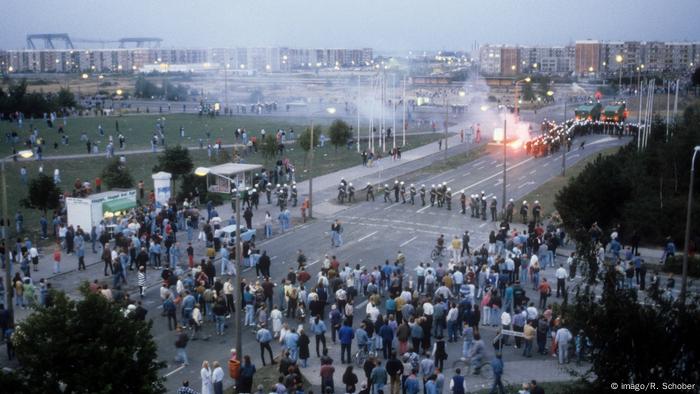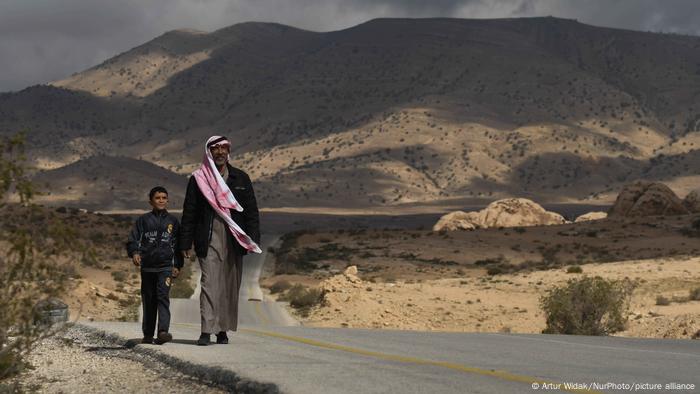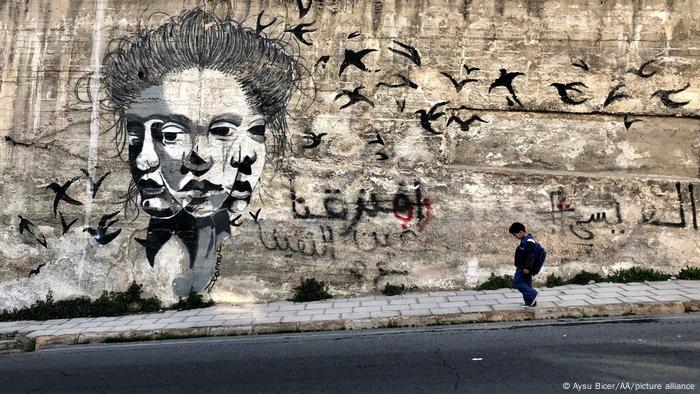ANALYSIS - Theo-politics of Pope’s visit to Iraq
Although it may be considered unnecessary to overplay the Pope’s visit by reading too much into it, when it comes to a two-thousand-year-old theopolitical institution, it is necessary to examine every detail of it from different angles
Prof. Dr. Ozcan Hıdır |18.03.2021
LONG READ
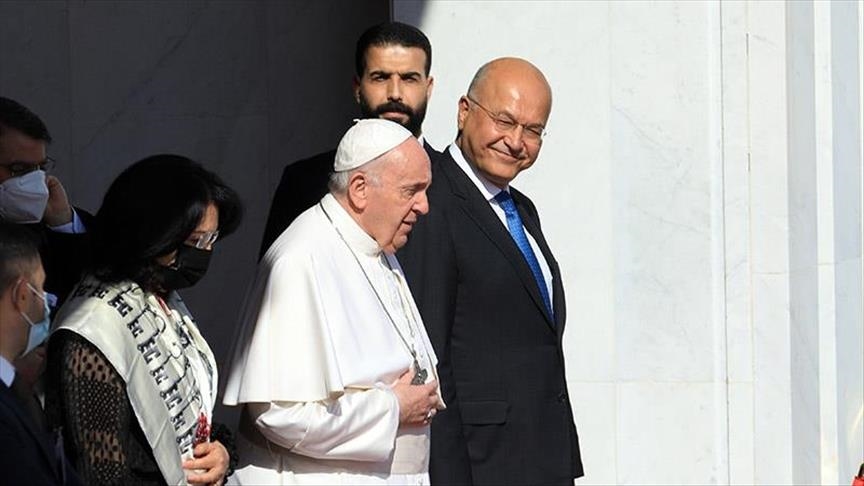
ISTANBUL
Pope Francis, the new Jesuit-origin leader of the Papacy, an institution with two thousand years of theopolitical history, visited Iraq as his first visit outside of Italy since the start of the COVID-19 pandemic. The tour, which seems to have been planned with the Papacy’s experience and consciousness going back two millennia, came to the fore with the announcement that the Pope had accepted the invitation sent by the Catholic community in Iraq in 2019 and that the visit would take place in 2020. As a result, for the first time in history, a Pope paid a visit to Iraq, where an estimated 250 thousand Christians live. As will be remembered, in 1999, the then Pope John Paul II wanted to visit Iraq, but Saddam Hussein did not allow it. The previous Pope, Benedict XVI, also wanted to plan a visit there, but he could not go, either.
Although it may be considered unnecessary to overplay the Pope’s visit by reading too much into it, when it comes to a two-thousand-year-old theopolitical institution, it is important to examine every detail of it from different angles, since both the scope of the visit and several symbolic statements made by the Pope drew attention (for example, he said “Assalamu Alaikum” when he first arrived, and later in his speech in Baghdad he remarked, “I come as a pilgrim of peace”). Apart from his meetings with state officials, he visited Najaf, the holy city of Iraqi-Arab Shi’ism, and met with Grand Ayatollah Ali al-Husayni al-Sistani (which was the first time a senior Ayatollah met with the Pope), and in the ancient city of Ur, where Prophet Abraham was born, he listened to a Quranic recitation and prayed with the representatives of the Muslim and Jewish communities, held a mass in the Assyrian and Chaldean cathedral-churches and met with opinion leaders, with representatives of the Kurdish administration in the Four Churches Square in Mosul (Nineveh) and in Erbil, and held masses at the Franso Hariri Stadium, which can be stated as theopolitical symbolic messages. To the journalists on board the papal plane, Pope Francis stressed the significance of the tour and the symbols associated with it by saying, “This is a symbolic visit, a mission; Iraq has long been a country of martyrs and victims.”
On the occasion of the meeting of the Pope and Sistani, and members of different religions in Ur also coming together by this opportunity, Iraqi Prime Minister Mustafa al-Kadhimi’s announcement that March 6 would henceforth be celebrated as a “National Day of Tolerance and Coexistence” in Iraq, which came as a remarkable aspect of the visit.
Religious or political?
It was also discussed on account of this visit whether the Pope’s visit to Iraq, and all his international visits in general, were made with his religious identity, political identity, or both political and religious (i.e., theopolitical) identities. As it is known, the Pope, as the successor of Apostle Peter, is regarded as God’s “deputy on earth.” As a consequence, the Pope’s true identity is religious, or theopolitical, and the public opinion is in that direction. As the head of state of the Vatican, he also has a secular position. What kind of identity/identities popes assume for their foreign visits, such as Pope Francis’ visit to Iraq, is also up for discussion. Because he has, so to speak, a “hybrid” identity, it is reasonable to assume that he made these visits with both identities (which may seem paradoxical), and that this is how the world perceives him; his religious or theopolitical position is nevertheless more prominent.
Mosul-Nineveh and Ur visits and Iraqi Sunnis
The ancient township of Nineveh, whose history dates back to 700 BC, and the city of Ur, which is considered to be the birthplace of Prophet Abraham, were two of the most important stops on the Pope’s visit to Iraq. Nineveh is also known as the city of Prophet Jonah (in whose name there is a surah in the Qur’an, and one of the books of the Old Testament is also named after him). The tomb of Prophet Jonah in Nineveh, as well as the town itself, was destroyed by Daesh when it invaded Mosul.
Despite the fact that many mosques in the area were also destroyed, Pope Francis brought up only the churches destroyed by Daesh in Mosul-Nineveh and prayed for war and armed conflict victims in the Hosh al-Bieaa Square in Qaraqosh (Al-Hamdaniya) district, also known as the “capital of Iraqi Christians.” Nobody talks about the suffering of Iraqi Sunnis, either in Mosul, the Sunni heartland, or in other parts of the country; the Pope didn’t even mention it. He could have made a symbolic gesture of goodwill by meeting with an Iraqi Sunni religious leader as well. Furthermore, the Pope’s remarks about “living in fraternity” and “no one should be killed” inevitably prompt us to ask a crucial question: who, in the first place, turned Syria, and especially Iraq, into the war-torn ruins that they are now, killing hundreds of thousands of Muslims?
Papacy, Iraqi Shi’ism and Iran
Although this is a debatable point, it can be said that, of all Muslim groups, Shi’ism, with its institutional and doctrinal structure, is most comparable to the Vatican-Papacy. One of the most striking pictures of the 84-year-old Pope’s visit to Iraq was his meeting with the 91-year-old Sistani --the leader of Arab Shiites, whose theological/theopolitical aspect is more prominent-- at the home of the latter -- and without even paying attention to wearing a mask or maintaining social distance. Although Sistani is of Iranian-Persian origin, he has differences of opinion with Grand Ayatollah Ali Khamenei and the city of Qom, the learning center of the Twelver Shia. The Pope’s meeting with Sistani has political/theopolitical significance with regard to Iran and Khamenei. We may also question whether the US was involved in the planning of this visit, since it seems only reasonable to assume that the US would be more than happy to foster ethno-sectarian rivalry among Shi’ites and would therefore not want Khamenei to establish authority over all Shi’ites. To that end, the schism among Shi’ites -- Sistani/Iraqi Shi’ites vs. Khamenei/Iranian Shi’ites -- may deepen, which would actually serve Israel’s interests. The rivalry between Qom and Najaf, as well as between Persian and Arab Shi’ism is well-known and has always existed in the background. In this context, it is also noteworthy that, during the Pope’s visit, a banner reading “You are part of us, we are part of you” was unfurled by a group of Christians, referring to Sistani, who has a well-known general attitude regarding the protection and security of Iraqi Christians.
On the other hand, while there is as yet no official response from Iran regarding these talks and messages, it seems that these messages did not sit well with the pro-Iranian Shi’ites in the country. Abu Ali al-Askari, a senior Iraqi Kataib Hezbollah commander, said on Twitter, “We should not be optimistic about the Pope’s visit and him making our homes calm and peaceful”. Iranian analyst Dr. Hossein Ruywaran also described the visit as political, not religious.
The “patron of Middle Eastern Christians”: Pope
One of the main messages of the symbolic rituals and church visits during Pope’s visit can be considered a reminder of the Christian past in these lands, as well as the Pope’s position as “guardian” of the Christian minorities in the region. As a matter of fact, the Pope brought up, at every opportunity, the difficulties faced by Christian minorities in the country and region, especially during his 50-minute meeting with Sistani. Sistani, on the other hand, emphasized the constitutional rights of the Christian minorities in the country and their right to live in peace and security like other Iraqi citizens. In fact, it is known that many Christians were settled in Shi’ite areas along the Najaf-Karbala road with Sistani’s approval.
Although there were nearly one and a half million Christians in Iraq 20 years ago, the number is now estimated to be about 250 thousand. These Christians come from diverse racial and denominational backgrounds. In addition to the small number of Catholic communities, there are also Chaldeans who are close to the Papacy in terms of administration. There are Orthodox and Catholic Syriacs, Armenians, and a small number of Protestant-Evangelical groups as well. With this visit, the Pope also gave the message that he is the protector of all these Christians. Naturally, this can be interpreted as a “Catholicization mission/call”, the implicit message being, “Come under the umbrella/patronage of the Vatican and the Papacy”, because the Vatican’s/Pope’s “interfaith dialogue” project actually aims at Christianizing non-Christians and Catholicizing non-Catholics. In this sense, the Pope’s visit to Najaf can actually be seen as a visit to al-Hirah, which is nearby. Al-Hirah, the capital of the Lakhmids, one of the ancient Christian peoples of the region, was instrumental in the revival of Christian cities and regions in the Middle East. Besides, in Christian theology, the Middle East, including Anatolia, is actually considered to be a sacred Christian land.
On the other hand, the Pope’s visit to Iraq could be interpreted as a message against the activities, based on an orientalist-humanist background, aimed at reviving Zoroastrianism, especially among Northern Iraqi Kurds. Numerous articles and analyses have been published about how the efforts to this end have ratcheted up in recent years. As a matter of fact, one of the messages delivered by Pope Francis during his Sunday service in a stadium in Erbil was addressed to this particular issue.
- Pope’s UAE visit of 2019 and 'new theopolitical line'
We should also establish a link between the Pope-Sistani meeting and the Pope’s talks with al-Azhar Sheikh Ahmed al-Tayeb --both during his 2017 visit to Egypt and the highly symbolic and theopolitical three-day visit to the United Arab Emirates (UAE) in 2019. In this context, the Pope met with Ahmet al-Tayeb, who he believes represents al-Azhar and Sunnis on the one hand, and Sistani, whom he highlighted as “the leader of Shi’ites”, on the other.
As will be remembered, the Pope’s visit to the UAE also drew attention as it was the first papal visit to the Gulf, the Arabian Peninsula, and it was emphasized in terms of the UAE’s likely future theopolitical position in the Middle East. During the visit, al-Azhar Sheikh Ahmed al-Tayeb greeted the Pope by hugging him at the airport and stayed by his side almost the entire time. Together, they signed the UAE-based “Muslim Government Council” and “Human Brotherhood” memorandum, and attended the “interfaith dialogue” meeting at the Sheikh Zayed mosque, attended by nearly 700 religious leaders. Following that, over 120 thousand Christians attended the mass held by the Pope at the Zayed Stadium.
Last October, the Pope released a new declaration entitled “Fratelli Tutti (All Brothers)” -- a call to universal fraternity and social unity -- in which he addressed all humanity. Therefore, his two meetings with the al-Azhar Sheikh in Egypt and in the UAE, and the one with Sistani during his latest visit to Iraq should be interpreted in light of this document/call. As a result, the Pope strengthened his relationship with the Islamic world, including both the Sunni and the Arab-Shiite wings. This can also be interpreted as a new “theopolitical line/alliance” addressed to the Islamic world, but one that excludes the Qatar-based World Union of Muslim Scholars (Yusuf al-Qaradawi, Ahmad al-Raysuni) as well as Iranian Shi’ism and Khamenei. We can also include within this line the Saudi Arabia-based World Islamic Union (Rabita) and Muhammed bin Abdul Karim Issa, who has previously met with the Pope and Vatican officials several times.
Abraham Accords and alliance of Semitic nations
It's possible to draw a connection between the “Abraham Accords” process, which started under former US President Donald Trump’s leadership, and the Pope’s visit to Iraq. Muslim countries such as the UAE, Bahrain, Morocco and Sudan have taken a so-called “normalization” step towards Israel. The Pope’s visit to Iraq may also be interpreted as a follow-up to the Abraham Accords. Indeed, the Abraham Accords can be viewed as a continuation of a merely “dialogue project,” which is nothing more than an orientalist take on “Abrahamic religions.” Thus, the Pope’s visit to the city of Ur, the birthplace of Prophet Abraham, and his emphasis on Prophet Abraham should be underlined in this respect. Pope Francis gave a message, saying “Unity, togetherness and faith began from Ur. We are descendants of Abraham”. The importance of Prophet Abraham was emphasized in the agreements between Israel and Arab countries, which were interspersed with references to an “alliance of Semitic nations”, referring to the shared Semitic heritage of Arabs and Jews. However, it is well-known that Arabs and Muslims, especially Prophet Muhammad, have been insulted in Jewish-Christian literature throughout history, and this is done in part by referring to them as “Ishmaelites-Hagarenes” (i.e., children of slaves/concubines).
All of this may point to a possible alliance between the Vatican and Israel aimed at a common approach to the greater Middle East; it is understood that they recently agreed to end their animosity
The “Catholic” Biden influence
The role of Joe Biden, the new Catholic president of the United States, in this potential alliance and the Pope’s visit to Iraq amid the pandemic has not gone unquestioned, either. Biden, who is proud of being a member of the American model of the Roman Catholic Church, is the second Catholic president of the United States after John F. Kennedy. This brings to mind Biden’s desire to create a theopolitical line in the Islamic world under the leadership of the Pope-Vatican/Catholicism. As a matter of fact, during his visit, the Pope did not say a word about the invaders in Iraq, first and foremost the US, which together have ruined the country and should leave it once and for all.
Essentially, this theopolitical line, which we believe was initiated by the Pope long before the visit, was merely continued with his visit to Iraq as leader of the Catholic world only a few months after Catholic President Biden took office in the White House. The region will soon see the repercussions of this.
A theopolitical bloc against the Russian Orthodox Church?
On the other hand, this visit of the Pope to Iraq as the “patron of Christians” can also be interpreted as the Papacy’s rivalry/bloc against the influence of the Russian Orthodox Church, which has been especially strong in Syria. This rivalry was closely followed in different regions, especially in Ukraine, and a rivalry formed between the Russian Orthodox Church and the pro-Western churches, particularly the Vatican. It is no secret that Russia wants to reinforce the “ecumenical” influence of the Russian Orthodox Church. There is even no shortage of statements in which Putin, the head of the Russian Church, is referred to as a “Mahdi-Messiah” or “the Tsar and the Saint” charged with preparing Russia for Doomsday, the apocalyptic reckoning, or the great end. There are also books published with such titles as “The Apocalyptics of Vladimir Putin.”
These theopolitical policies, whose most recent repercussions we have been witnessing in Syria, represent the Russian Orthodox Church’s desire to become the new leader and patron of all Eastern Christians. In this regard, Pope’s visit to Iraq could be interpreted as an attempt by the West, especially the United States, to curb the Russian Church’s theopolitical sphere of influence in Iraq-Syria and the Middle East.
What is the message of the visit for Turkey?
The Pope’s visit to Iraq can also be said to contain subtle messages for Turkey. In fact, the Pope’s highly symbolic statements and talks during his visit can be assessed as a message to Turkey, implying overall that they definitely do not desire to see the region being shaped by a powerful Sunni country like Turkey. Indeed, Sunnis and Sunnism in Iraq were besieged from all sides up until a few years ago; now it is even worse: they have been on the verge of being completely eliminated or neutralized for quite some time.
Another symbolic meeting the Pope had in this regard was with members of the terrorist Hashd al-Shaabi, which was established with Sistani's fatwa and has been collaborating with PKK terrorists in Sinjar, as it turned out. Moreover, it was reported in several news outlets covering the Pope’s visit that he gave his own rosary beads to Rayan Salim al-Kildani, the leader of the Babylon Brigade, a Christian militia founded in 2014 as part of Hashd al-Shaabi; the same Hashd al-Shaabi that has been hurling threats at Turkey for some time. During the meeting between the Pope and Sistani, the head of a Hashd al-Shaabi subunit even made a comment along the lines of purchasing an air defense system from the United States in order to defend themselves against Turkey.
It seems that there are both visible and subtle aspects and ramifications of the Pope’s visit to Iraq. Therefore, theopolitical ramifications of the visit in the area, especially in Iraq, will become clearer as the Biden administration takes concrete steps toward the region. We’ll have to wait and see.
Translated from Turkish by Baran Burgaz Ayaz
Prof. Dr. Ozcan Hıdır
The author is a faculty member at Istanbul Sabahattin Zaim University. He specializes in hadith studies, the relationship between Jewish and Christian cultures, inter-religious and intercultural interactions, Orientalism-Occidentalism, theopolitics, anti-Islamism (cultural racism), and Islam and Muslims in Europe and the West.
* Opinions expressed in this article are the author’s own and do not necessarily reflect the editorial policy of Anadolu Agency.
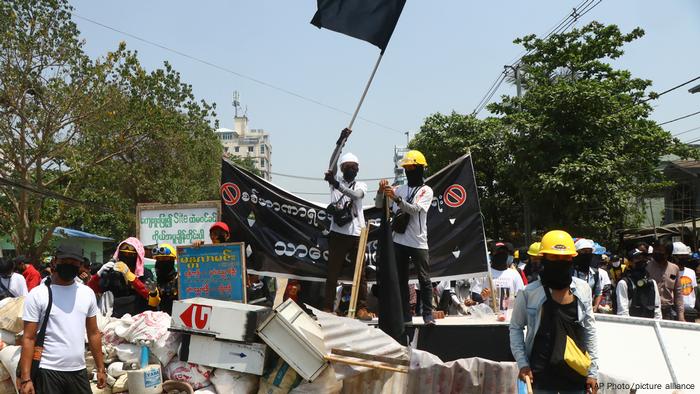
 bit.ly/3c2Fmvz
bit.ly/3c2Fmvz
